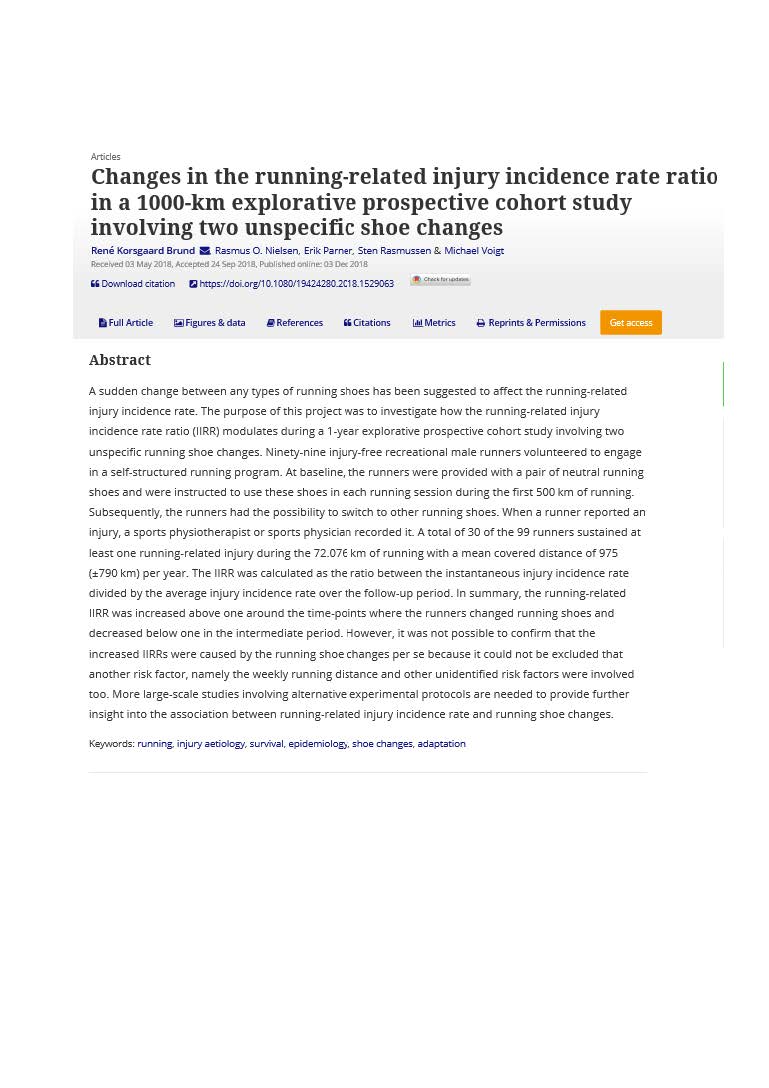Does change in running shoe influence running injury occurrence?
A new study in Footwear Science by Brund et al. explores if risk of running injury changes immediately after a change in running shoe.

Abstract
A sudden change between any types of running shoes has been suggested to affect the running-related injury incidence rate. The purpose of this project was to investigate how the running-related injury incidence rate ratio (IIRR) modulates during a 1-year explorative prospective cohort study involving two unspecific running shoe changes. Ninety-nine injury-free recreational male runners volunteered to engage in a self-structured running program. At baseline, the runners were provided with a pair of neutral running shoes and were instructed to use these shoes in each running session during the first 500 km of running. Subsequently, the runners had the possibility to switch to other running shoes. When a runner reported an injury, a sports physiotherapist or sports physician recorded it. A total of 30 of the 99 runners sustained at least one running-related injury during the 72.076 km of running with a mean covered distance of 975 (±790 km) per year. The IIRR was calculated as the ratio between the instantaneous injury incidence rate divided by the average injury incidence rate over the follow-up period. In summary, the running-related IIRR was increased above one around the time-points where the runners changed running shoes and decreased below one in the intermediate period. However, it was not possible to confirm that the increased IIRRs were caused by the running shoe changes per se because it could not be excluded that another risk factor, namely the weekly running distance and other unidentified risk factors were involved too. More large-scale studies involving alternative experimental protocols are needed to provide further insight into the association between running-related injury incidence rate and running shoe changes.
Reference
Changes in the running-related incidence rate ratio in a 1000-km explorative prospective cohort study involving two unspecific shoe changes.
Brund, R.B.K.; Nielsen, R.O.; Parner, E.T.; Rasmussen, S.; Voigt, M.
Footwear Science, December 2018: In press.
Link to publisher
You can assess the article HERE